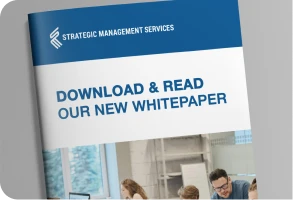Benchmarking Compliance Programs
Key Points:
- Benchmarking provides context for assessing a compliance program
- Benchmarking is comparing against a standard or other organizations
- Examples of compliance benchmarking
The OIG and other regulatory authorities frequently cite Compliance benchmarking as important in evidencing compliance program effectiveness. The OIG Compliance Program Guidance states, “the existence of benchmarks that demonstrate implementation and achievements are essential to any effective compliance program.” In healthcare compliance, benchmarking is a process used to measure the quality and performance of the compliance program efforts by comparing against some sort of standard or other businesses in the same sector. The objective is to gather data from comparisons against standards or other organizations and use the information to implement changes that will improve the Compliance Program’s effectiveness. Results can assist in (a) improving processes and procedures, (b) gauging results of past performance, (c) providing ideas on program improvement, and (d) evidencing increases in program efficiency and effectiveness. Done properly, it can evidence weaknesses and gaps warranting attention and should be an ongoing monitoring process for seeking continuous improvement over time.

Benchmarking Against Standards. A standard is set up by authority or general counsel as a rule for measuring. The OIG provided an example in their Compliance Program Guidance of claims processing where the standard for benchmarking would be error rates. A Quality Assurance Program should engage in what is commonly referred to as Quality Control Reviews, by which the ongoing monitoring involves a testing error of live claims being processed rates by diagnostic and procedural codes and those responsible for making errors. Correcting errors and those causing them with educational contacts or retraining should improve quality control. By benchmarking, reducing error rates would be considered evidence of an effective compliance system of compliance controls. Having periodic independent compliance program effectiveness evaluation and using a prior review as the standard, comparing results in later evaluations is another method to benchmark the progress of the compliance program.
Benchmarking Against Other Organizations. A second compliance benchmarking method suggested by the OIG in their Compliance Program Guidance is taking a “snapshot” of their operations as part of benchmarking analyses to establish a baseline for the compliance officer. They further suggest that one way to assess staff knowledge, awareness, and perceptions is through a validated survey instrument. It permits making a judgment about the status or effectiveness of the compliance program and provides a way to shape and scope further development of the program’s effectiveness. There are two types of surveys: a compliance knowledge survey that measures employees’ knowledge and understanding of the compliance program and a compliance culture survey that measures employee attitudes and perceptions concerning organizational compliance. If the survey results are benchmarked against a large universe of those using an identical survey instrument, the status of the compliance program provides significant information on the progress of creating an effective compliance program. Organizations can also benchmark results from one survey to another to show program improvements. Survey results provide powerful evidence of compliance program effectiveness to executive leadership, the Board, and outside authorities. Noteworthy is the HHS OIG issued “Measuring Compliance Program Effectiveness: A Resource Guide” (Guide), in which surveys were mentioned 61 times for all seven elements.
You can also keep up-to-date with Strategic Management Services by following us on LinkedIn.
Subscribe to blog